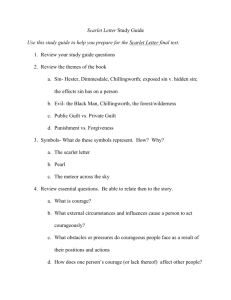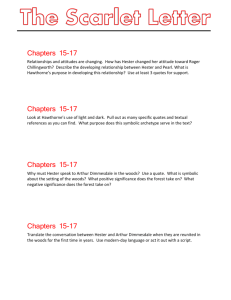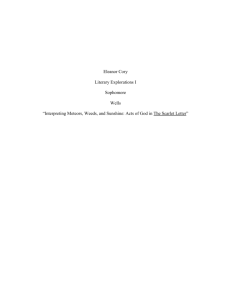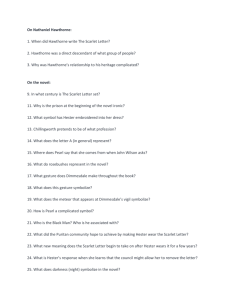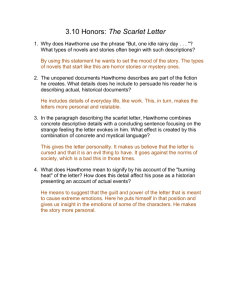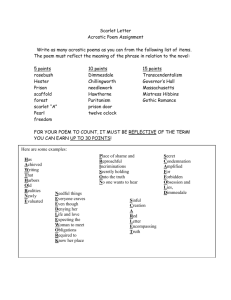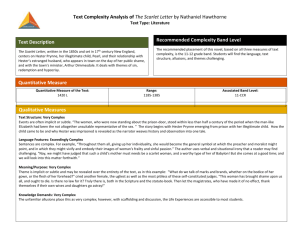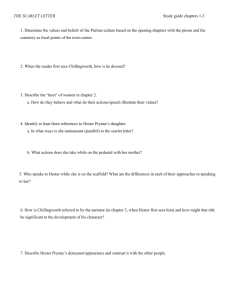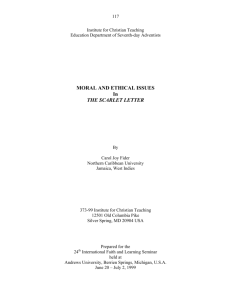The Scarlet Letter Socratic Seminar Prep
advertisement
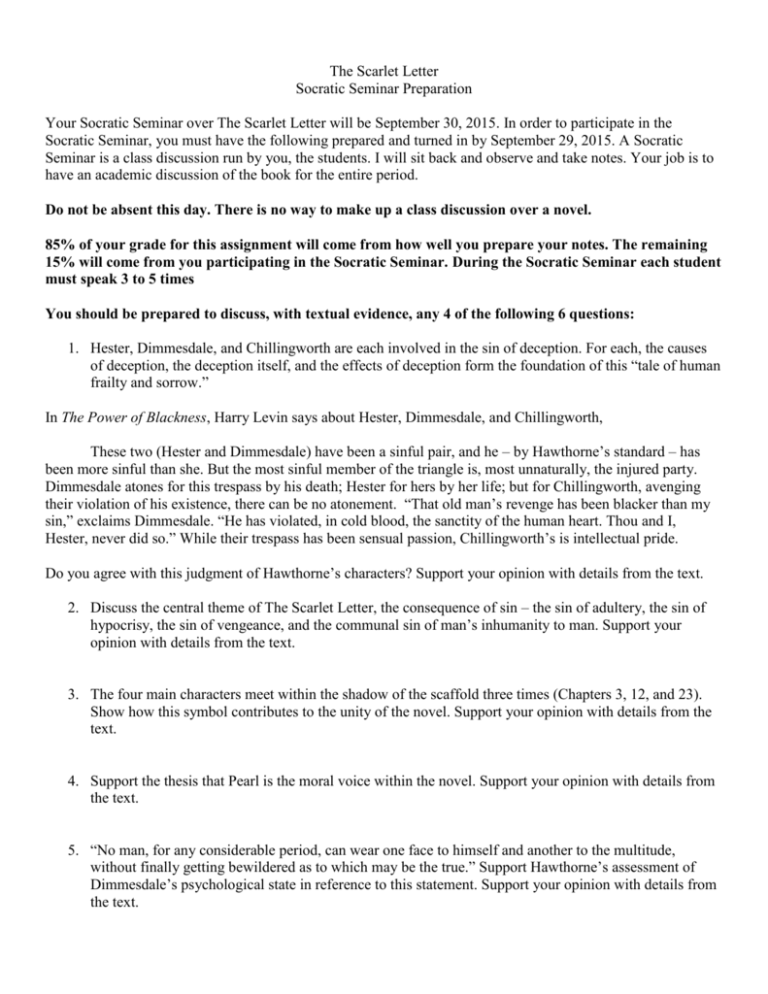
The Scarlet Letter Socratic Seminar Preparation Your Socratic Seminar over The Scarlet Letter will be September 30, 2015. In order to participate in the Socratic Seminar, you must have the following prepared and turned in by September 29, 2015. A Socratic Seminar is a class discussion run by you, the students. I will sit back and observe and take notes. Your job is to have an academic discussion of the book for the entire period. Do not be absent this day. There is no way to make up a class discussion over a novel. 85% of your grade for this assignment will come from how well you prepare your notes. The remaining 15% will come from you participating in the Socratic Seminar. During the Socratic Seminar each student must speak 3 to 5 times You should be prepared to discuss, with textual evidence, any 4 of the following 6 questions: 1. Hester, Dimmesdale, and Chillingworth are each involved in the sin of deception. For each, the causes of deception, the deception itself, and the effects of deception form the foundation of this “tale of human frailty and sorrow.” In The Power of Blackness, Harry Levin says about Hester, Dimmesdale, and Chillingworth, These two (Hester and Dimmesdale) have been a sinful pair, and he – by Hawthorne’s standard – has been more sinful than she. But the most sinful member of the triangle is, most unnaturally, the injured party. Dimmesdale atones for this trespass by his death; Hester for hers by her life; but for Chillingworth, avenging their violation of his existence, there can be no atonement. “That old man’s revenge has been blacker than my sin,” exclaims Dimmesdale. “He has violated, in cold blood, the sanctity of the human heart. Thou and I, Hester, never did so.” While their trespass has been sensual passion, Chillingworth’s is intellectual pride. Do you agree with this judgment of Hawthorne’s characters? Support your opinion with details from the text. 2. Discuss the central theme of The Scarlet Letter, the consequence of sin – the sin of adultery, the sin of hypocrisy, the sin of vengeance, and the communal sin of man’s inhumanity to man. Support your opinion with details from the text. 3. The four main characters meet within the shadow of the scaffold three times (Chapters 3, 12, and 23). Show how this symbol contributes to the unity of the novel. Support your opinion with details from the text. 4. Support the thesis that Pearl is the moral voice within the novel. Support your opinion with details from the text. 5. “No man, for any considerable period, can wear one face to himself and another to the multitude, without finally getting bewildered as to which may be the true.” Support Hawthorne’s assessment of Dimmesdale’s psychological state in reference to this statement. Support your opinion with details from the text. 6. The highly charged symbolism of The Scarlet Letter is one of its most distinctive features. Discuss the central symbol of the story—the scarlet letter itself. What does it signify? How does it function in the novel? How does its meaning change over time? Support your opinion with details from the text. You must also be prepared to answer any 4 of the following 8 questions: (Once again, textual support is a must). 1. Woods, or forests, are traditional symbols of being lost spiritually or morally. Explain the significance of the forest in The Scarlet Letter. Support your opinion with details from the text. 2. How does this novel relate to feminist literature? Is Hester a strong female character? 3. How essential is the setting to the story? Could the story have taken place anywhere else? 4. What is the role of women in the text? How are mothers represented? What about single/independent women? 5. Hawthorne came from a long line of Puritans (one of his forefathers was a judge during the Salem witch trials), and Puritan beliefs about subjects like guilt, repression, original sin, and discipline inform the book on every level. What is your impression of how the Puritan worldview is taken up and treated by Hawthorne in The Scarlet Letter?" 6. Describe and discuss the character of Roger Chillingworth in the novel. What does he represent in terms of the larger themes explored by the book? 7. How does Hester change over time in the novel—and how does she change in the eyes of the society around her? 8. The priest in the story, Dimmesdale, is a figure of hypocrisy who preaches virtue from the pulpit and refuses to take his daughter’s hand in public—but pays a terrible personal price for his actions. What points do you think Hawthorne is trying to make about organized religion? How far is Dimmesdale responsible for his own actions and how much are the townsfolk responsible for forcing him into his position?
